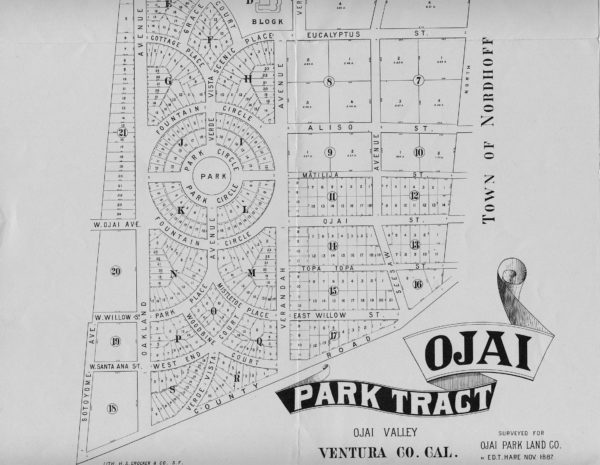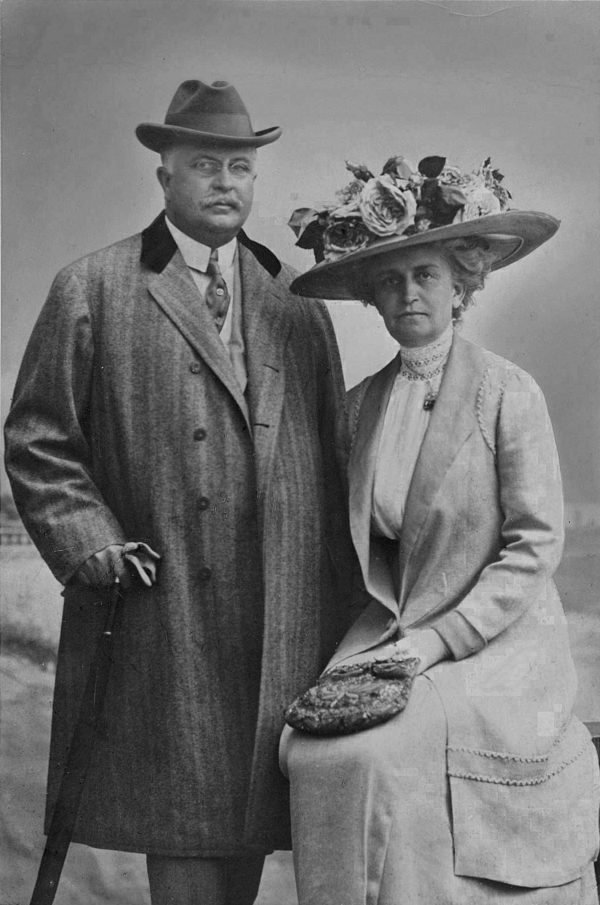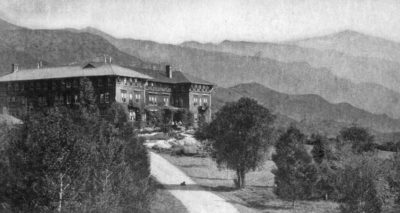Ojai’s Illustrated History Re-Issued
OFF THE SHELF | By Kit Stolz
“Ojai: An Illustrated History” has been for decades the best-known and most complete history of the town. First published in l983 by Patricia Fry, the book begins with a look at the history of the land itself, followed by an account of the Chumash, who lived in the valley for millennia before the arrival of the Spanish. Hundreds of pages follow, bringing alive the individuals, institutions, and true stories of this town.

Yet when Fry — who has gone on to write dozens of other books — wanted to sell the copyright to her respected history, where did she go to put out the word? In an irony possible only in the 21st century, the original author didn’t go to publishers, or historical societies, or wealthy benefactors. She went to Facebook.
“I was on Facebook when I saw that Patty Fry was asking if anybody would like to pick up the republication of the book,” said Craig Walker, a retired history teacher and a member of the board of directors of the Ojai Museum. “Her career as a writer had taken a different direction, and she had updated it once already [in 1999] and didn’t wanted to do it again. I went to the Board and told them she wanted to sell the rights. It seemed like a natural for the museum, and the Board was excited about it.”
Local author and museum curator Elise DePuydt did the bulk of the revising, in collaboration with Walker. Every Sunday for a year the two would meet on Sundays at the museum with David Mason, known as “Mr. Ojai,” for his encyclopedic knowledge about the town and its people, about which he wrote years of newspaper columns. Together they meticulously worked through Fry’s original editions, producing this year — in time for the centennial of the town known as Ojai — a large format paperback, including hundreds of classic photographs, based on contemporary accounts, mostly newspapers.
It’s an impressively detailed and thoughtfully developed story. Ever wonder why oil influenced the early development of Ventura to the west and Upper Ojai to the east, but not Ojai itself? It’s not because 19th-century settlers didn’t look for oil in Ojai. In fact, Thomas Scott, a very successful oilman from Pennsylvania, bought the entire 277,000 acre Spanish land grant called Rancho Ojai in 1864, and spent over $200,000 over three years drilling wells in search of oil in and around the land that became the town. Eventually the expedition led by Thomas Bard struck oil in Upper Ojai, in 1867, but by then Scott had given up on his lost investment.
DePuydt thinks it’s a good thing for Ojai that oil wasn’t discovered in Ojai.

“I was looking at the Avenue in Ventura just the other day, thinking about all those oil rigs and industrial sites, with the houses sprinkled between them and the chemical plants,” said DePuydt in an interview. “It’s a little sad to me. I think Ojai has been very fortunate to have attracted so many people who worked to defend the beauty of this town. People like Elizabeth Thacher and John Montgomery.”
Montgomery arrived with his family in 1874, hoping to find a dry climate that would cure his wife’s asthma. The couple was attracted by a developer’s published map promising an elegant little town complete with fountain. The map turned out to be almost completely fictional, but Montgomery didn’t mind.
He wrote [as quoted in the history] that “Grander than any map painting was stamped on nature’s great canvas, the dense oak forest; the perpetual play of sunshine through the foliage, the towering mountains, guardians of rustic beauty below, and above all the balmy breath of life soothing the tender tissue of throat and lung.” Montgomery went on to buy 1300 acres of what is now downtown Ojai, and work with others — including Charles Nordhoff, who published a book extolling California to Easterners — to develop the town.
Co-author Craig Walker believes that the Foothills Hotel, although destroyed in the fire that devastated most of Ojai in 1917, had a huge impact on the town’s history. It was one of four grand hotels in Southern California at the turn of the century (with the Potter Hotel in Santa Barbara, the Raymond in Pasadena, and the Hotel Coronado in San Diego) and attracted wealthy Easterners who stayed the winter. An early visitor was glass manufacturer Edward Libbey. Inspired by the City Beautiful movement that was revitalizing the Midwestern cities where he made his fortune, Libbey set out to remake the town.
“Libbey felt that the village typified most western towns and lacked distinction,” the authors write. “The dusty main street was lined with little shops, hastily built years earlier without much concern for design.”
With backing from Libbey and a modest buy-in from local merchants, Ojai became the first small town in the nation to rebuild itself according to City Beautiful principles, imagined along the lines of an Old World Spanish village, as designed by notable architects.

Walker thinks that that the City Beautiful idea — that good architecture and city planning could inspire civic virtues, make people care about their town and spend time and energy improving it — worked back in Edward Libbey’s time and still works today. He points out that in 1989, when the state required that the Arcade be made earthquake-proof, some people in town advocated for tearing it down rather than spending the money. David Mason formed a “Friends of the Arcade” group to help raise money to save it, and eventually the city stepped in to take possession and preserve it.
“I think if people understood the history and the gift we were given by Mr. LIbbey maybe they’d be less likely to want to tear these buildings down,” he said. “It was a great experience working with Elise on the book and I think it’s terrific the museum stepped forward and gave us a legacy to continue here in Ojai.”

Leave A Comment